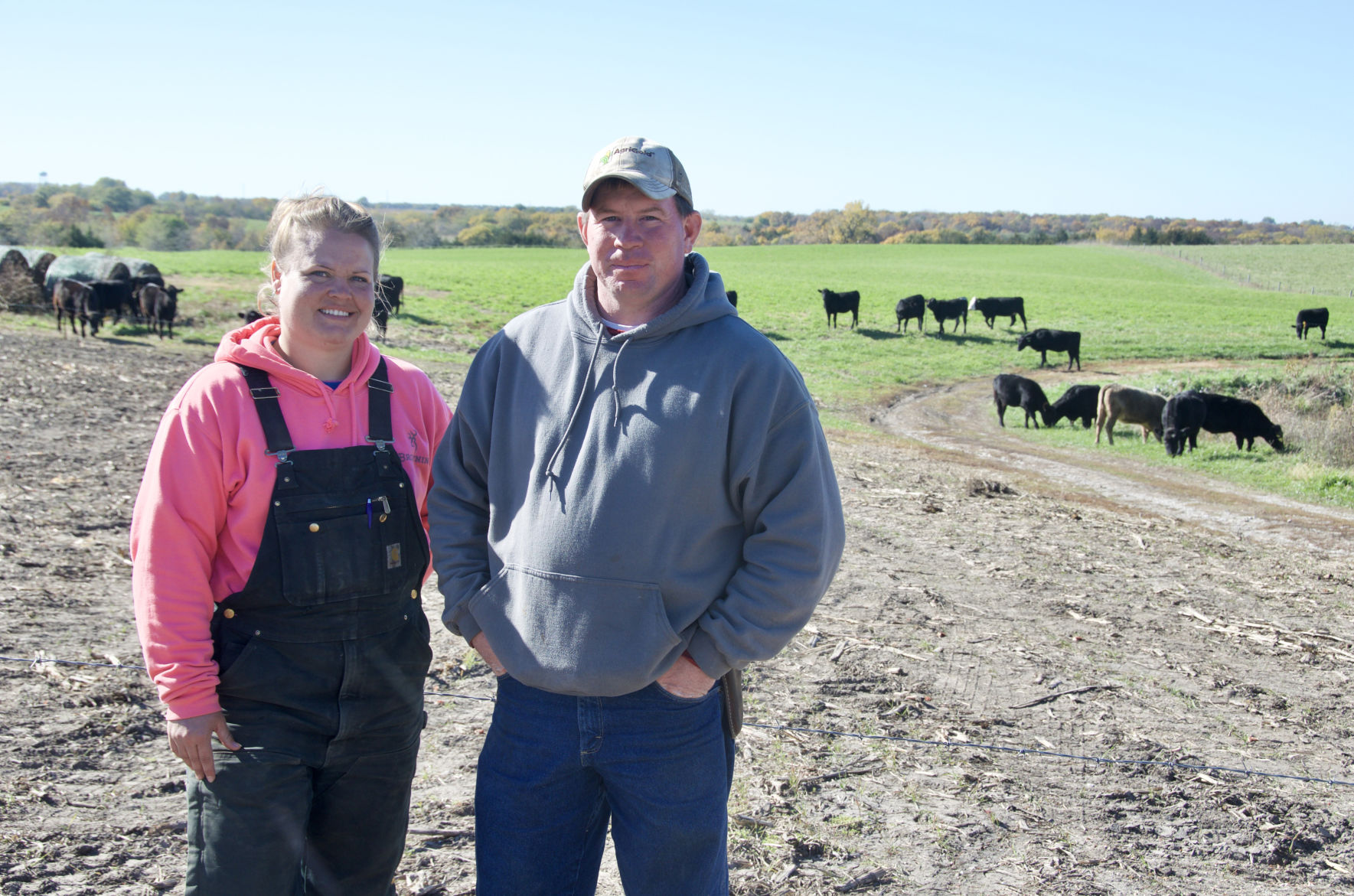Cover crops can be used as a tool to achieve happy, healthy soil, according to southern Iowa cattleman Brian Kessel.
Kessel started using cover crops about seven years ago mainly as a tool to prevent erosion, but he’s seen other benefits added to the soil because of the addition of cover crops.
“We can graze the cover crop after harvest, whether it is for silage or grain,” said Kessel. “And on years like this year, when we are in drought conditions, there is more moisture held in the ground because of the cover crops.”
Julie McMichael, conservation specialist with the Iowa Natural Resources and Conservation Service, said soil is a farmer or rancher’s best resource and it is important to take care of it. A good first step is taking soil samples in different areas of the farm to determine the needs of the soil. Cover crops can add to the soil, while providing more organic material and nutrients to the ground.
“It’s important to know the pH of the ground as well. Just as we like mild temperatures, soil is happiest at 72 degrees Fahrenheit,” said McMichael. “Cover crops help hold the temperatures and help it warm up faster in the spring to be ready for planting corn and soybeans. Look at cover crops as tillage using plants.”
Choosing the right cover crop for the situation is the decision. Kessel uses wheat as a cover crop on fields where soybeans have been and rye in the cornfields.
Chris Clark, Iowa State University Extension beef specialist, said cereal rye is commonly used by cow-calf producers to be able to extend the grazing season in the fall, winter and spring because it’s easy to establish and grow.
“Most cattle producers like that the cover crops can help provide feed for their cattle and help decrease the need for purchased feed,” Clark said.
He said it is important to be aware of the grazing restrictions on herbicides applied the prior crop in the field. Timing of grazing is important to prevent problems with residual.
Determining the nutrient content of cereal rye forage depends on the maturity of the forage. At the vegetative state, crude protein and total digestible nutrients are the highest. More dry matter is available as ryelage and straw, and the yield is highest for ryelage.
Nutrient requirements change with different sizes of beef animals also. “While crude protein requirements are easily met with the vegetative stage of cereal rye, the protein is highly soluble. Supplemental feed may be needed to meet all nutrient requirements,” Clark said. “But know what kind of supplemental feed to use. Distillers grains are a good supplement, but not in the case of turnip or radish grazing.”
Corn stalks will help meet the dry matter needs for the animals and is an economical way to care for cows.
Grazing management can also be used to help properly utilize the forages. Strip grazing with hot wire fencing is a good way to do this, according to Clark. Lush, fast-growing cereal rye can be high in potassium and low in magnesium, which can cause grass tetany. Clark suggests providing free-choice high magnesium mineral.
Ergot poisoning can also be a problem. This is a fungal organism that affects small grains and grasses and is most commonly found in plants during the summer months when cool, wet springs are followed by dry, hot summers. Ergot alkaloids cause constriction of blood vessels and contribute to hyperthermia, heat stress and decreased milk production.
Nitrate levels can be a concern in some small grains and brassicas like turnips and radishes. When consumed, nitrates are converted to nitrites in the rumen. Nitrites go to the blood and cause problems with hemoglobin molecules, making them unable not carry oxygen. Signs of nitrate poisoning include weakness, lethargy, incoordination, increased heart rate, increased respiratory rate and dark colored blood.
Prevention of nitrate poisoning can be accomplished by knowing nitrate levels in the forages being grazed. If nitrate poisoning is suspected, Clark said producers should contact their veterinarian to assist with diagnosis and treatment.
“Grazing should start when the plants have adequate root development and are a minimum of 6 inches in height to help give the benefits to the soil,” Clark said. “Cover crops are a great opportunity to get soil health benefits and provide more forages for cattle.”
Overall, Kessel has seen an increase in organic matter from 1 percent to 5 percent, which has also increased grain yields.
“We are always willing to try new management practices to improve our farming and cattle operation,” Kessel said.
Jennifer Carrico can be reached at [email protected].



